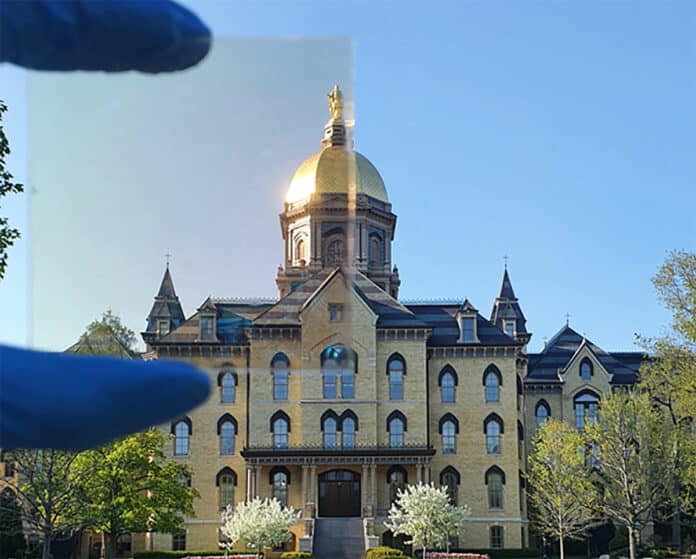Due to climate change, the average global temperature will rise in the coming decades. This should also significantly increase the demand for the building’s cooling energy to keep the indoor temperature at a comfortable level.
Cooling down buildings already accounts for a significant portion of global energy consumption. That demand could be lowered with a window coating that could block the sun’s ultraviolet and near-infrared light, which typically pass through the glass to heat an enclosed room. However, developing materials that are transparent and can simultaneously function as radiative coolers is extremely difficult.
Now, an international team of researchers has used advanced computing technology and artificial intelligence to design a transparent window coating that could lower the temperature inside buildings without expending a single watt of energy. This can help reduce power bills and carbon emissions.
The research team includes Eungkyu Lee from Kyung Hee University in South Korea and Tengfei Luo, Seongmin Kim, Wenjie Shang, and others from the University of Notre Dame in the U.S.
The new window coating, which they call a “transparent radiative cooler” (TRC), radiates heat from the window’s surface at a wavelength that passes through the atmosphere into outer space. Also, it is clear enough to let visible light in and not interfere with the view.
The team constructed some computer models of TRCs consisting of alternating thin layers and tested all possible combinations. They used thin layers of common materials like silicon dioxide, silicon nitride, aluminum oxide, or titanium dioxide on a glass base and added a film of polydimethylsiloxane on top of the coating. Using an iterative approach guided by machine learning and quantum computing, they optimized the type, order, and combination of layers.
After efficiently testing all possible combinations in a fraction of a second, the team was able to produce a new coating design that beat the performance of conventionally designed TRCs in addition to one of the best commercial heat-reduction glasses on the market.
These optimized TRCs could be very beneficial in cities with very hot and dry climates. When put on conventional windows, it could potentially reduce cooling energy consumption by 31% compared with conventional windows. Specifically, this cooler may lead to an annual energy saving of up to 86.3 MJ/m2 in hot climates compared with normal glass windows.
In addition to cooling the buildings, the coating could be applied on cars and truck windows, which also spend energy on cooling their inner environments.
Journal reference:
- Seongmin Kim, Wenjie Shang, Seunghyun Moon, Trevor Pastega, Eungkyu Lee, and Tengfei Luo. High-Performance Transparent Radiative Cooler Designed by Quantum Computing. American Chemical Society, 2022; DOI: 10.1021/acsenergylett.2c01969
